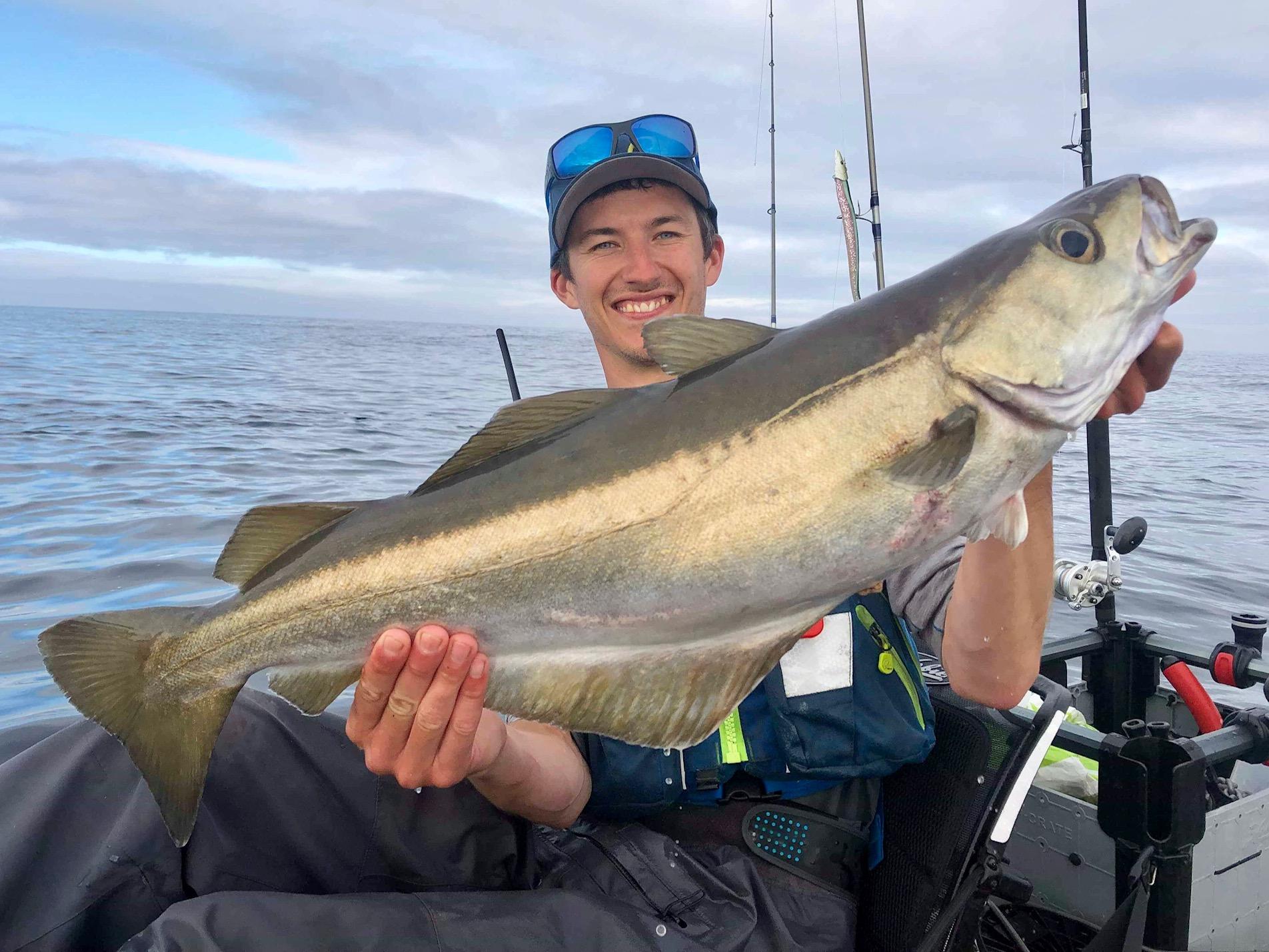Choosing a spot to fish can be tricky. There are very few local guides for kayak fishing, you will need to do your homework on venues in your area before heading out on the water.
There are lots of things to consider before you go to the effort of putting your kayak on your vehicle, loading up your gear and heading to the waters edge … what is the parking like? Is there easy access to the water? Are there any hazards? Perhaps strong tidal flows? When will the venue be most sheltered from the wind? Does the spot dry out at low tide?
Access to the water
Possibly the most important consideration – if you will struggle to get a kayak from your vehicle to the water. Google Maps is your friend here. Take a look around your area and make a note of any spots that look like they provide good access to the water.
So what makes an easy launch spot? Calm water, sheltered from the wind and surf is good for an easy time launching your kayak. Sheltered harbours often have a public slipway so these can be great places to start your search for a good launch spot. Gently sloping beaches are also great places to launch a kayak in calm conditions. Beware of rocky shorelines and steep shingle beaches – these can prove tricky and somewhat dangerous. Whilst slipways are ideal launch spots, if they are particularly steep you may struggle to haul your kayak back up one without help, especially after a long day on the water!
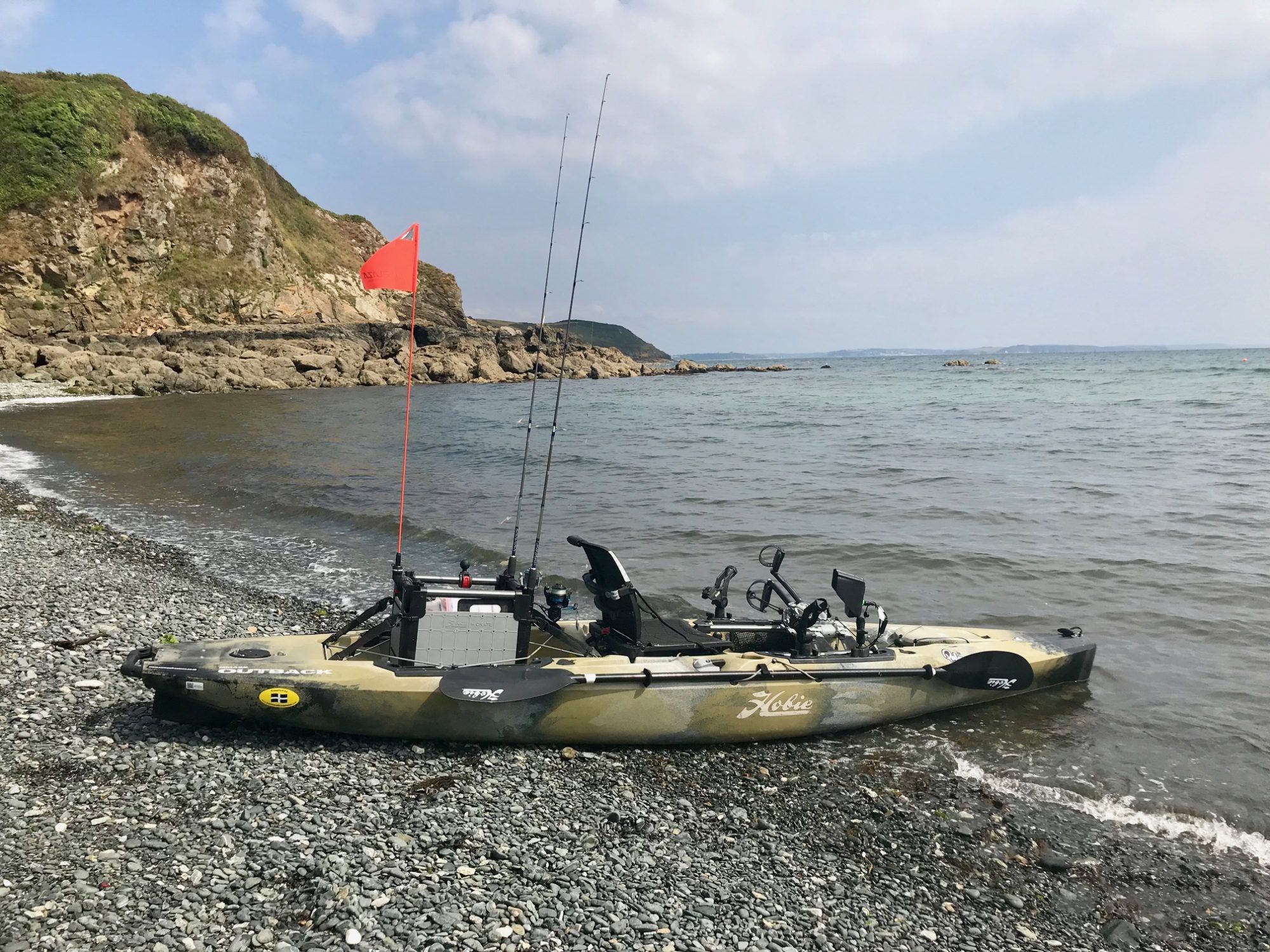
It is always worth visiting a potential launch venue prior to turning up with a kayak. What may look like an easy launch on Google Maps may prove to be a particularly steep and difficult spot to launch a kayak from once you arrive!
You will also need to check the tides too. Will the calm harbour at high tide turn into a muddy mess at low tide? Will the short walk down the beach at high tide turn into a 500-yard mission back to the car at low tide? Studying online images of your launch spot may help decipher how it looks at different states of tide.
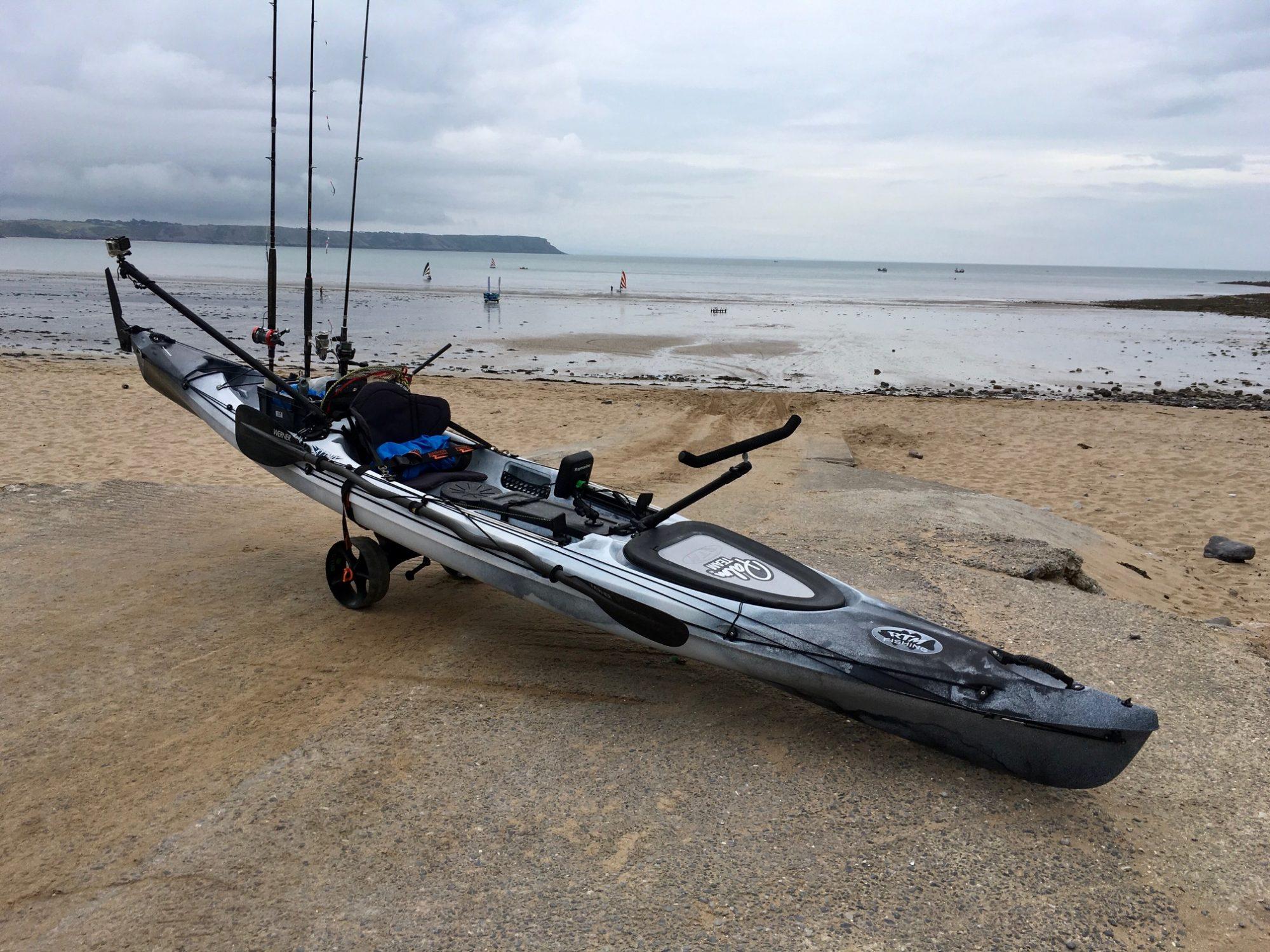
Parking
If a car park is more than a couple of hundred yards from the waters edge it may be worth considering a different venue, especially if steep hills are involved! If you have a van, are there are any height-restrictions to the car parks at your desired launch? There is nothing worse than a long drive to find you cannot get into the car park!
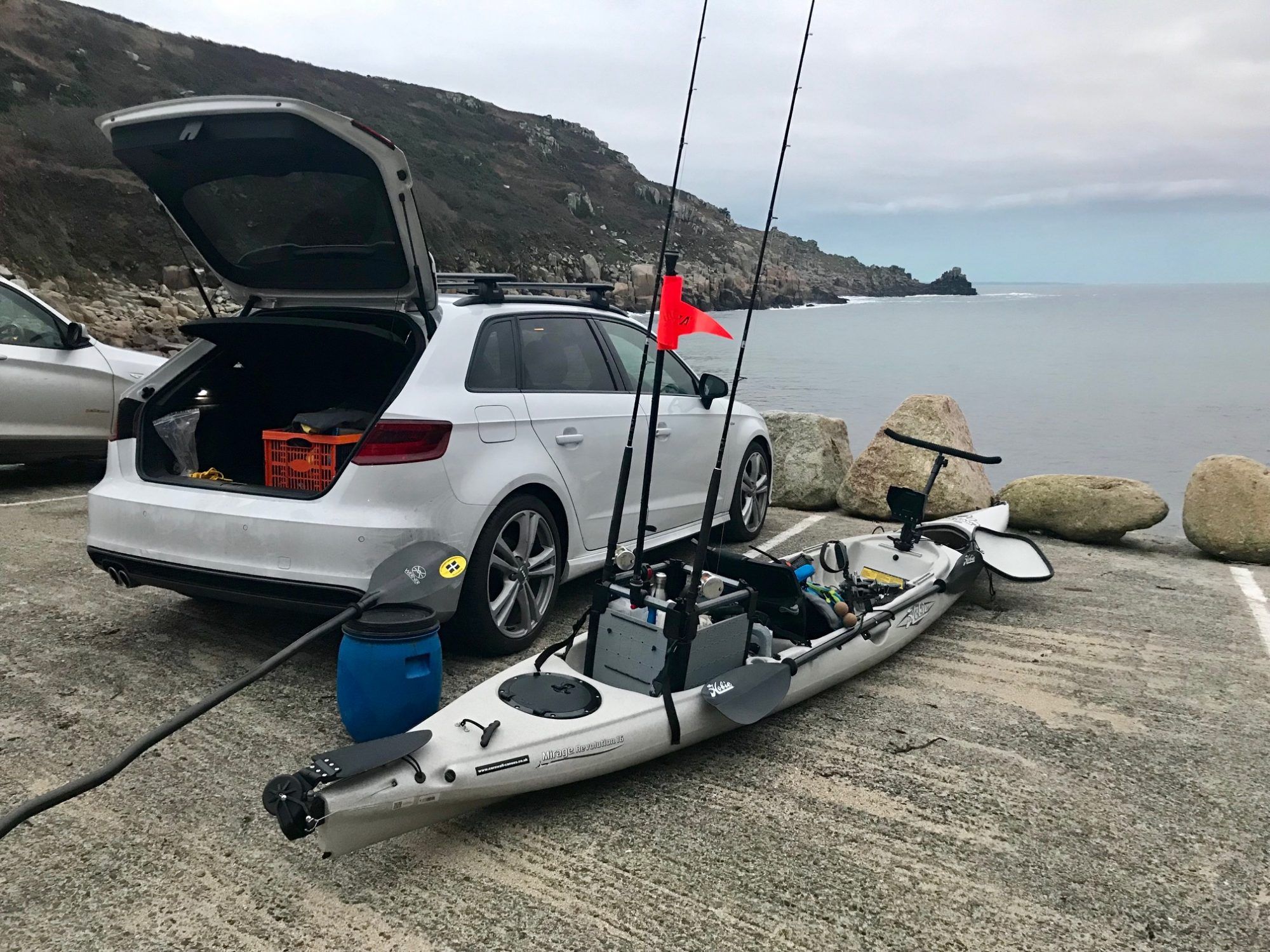
Tides
Before any fishing trip on the sea, check the tide times. There is a little more to the tide than it just ‘coming in’ and ‘going out’. Some areas have a greater difference between low tide and high tide than others. Those venues that have a greater tidal range will experience greater tidal flows and this could make paddling and fishing from a kayak tricky.
Check the lunar calendar for spring and neap tides. Spring tides bring greater tidal ranges, stronger tidal flows and potentially more challenging conditions for kayak fishing and paddling. On the flip side, neap tides are often much easier paddling and fishing conditions.
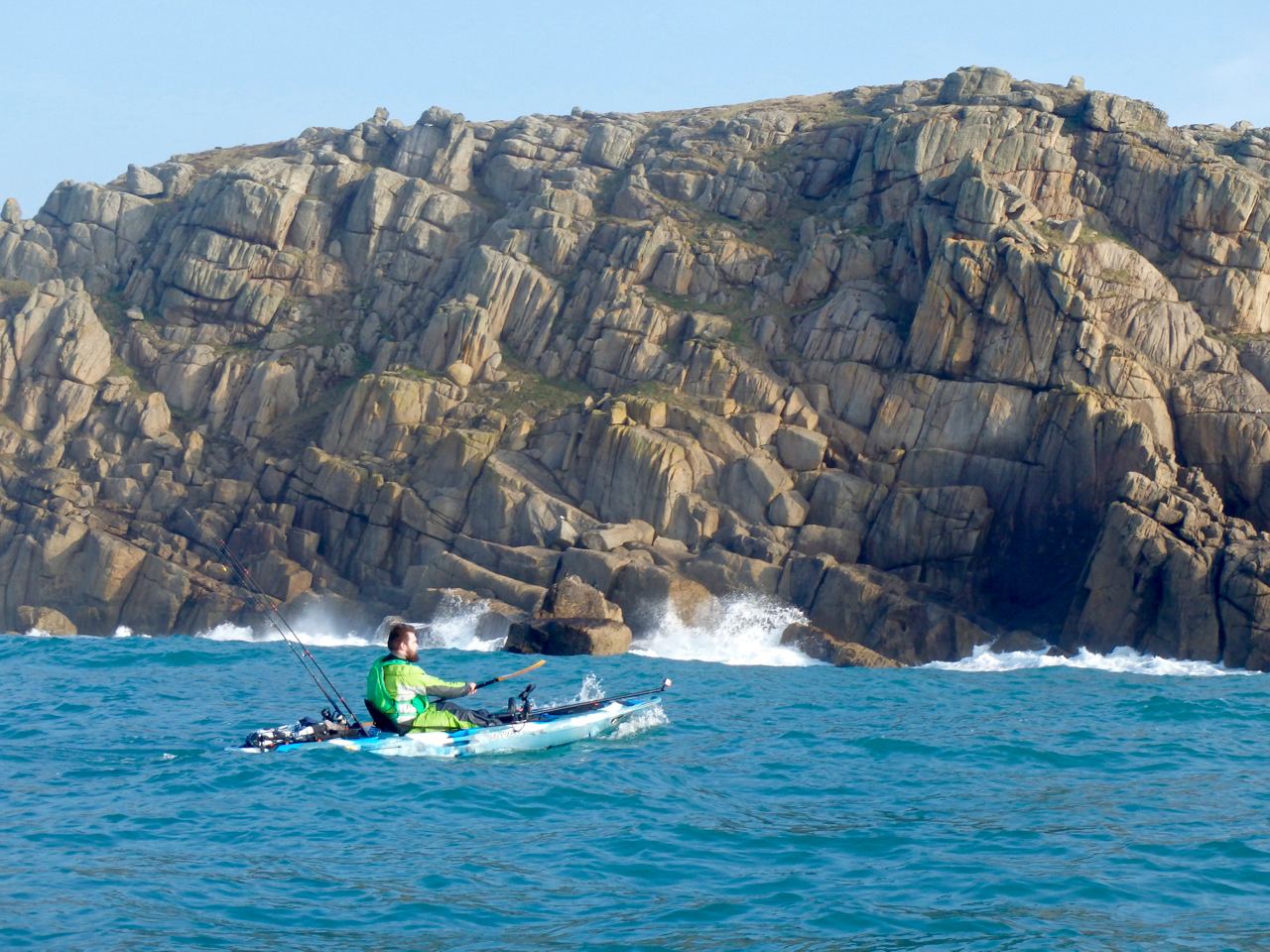
Make a note of the time of high and low tide at the venue on the day you want to launch and fish. Tidal flow tends to be strongest at mid-tide at most venues, with slack water and lower tidal flows over during hightide and low tide. Check the tidal flow direction too. Does the tide flow left-to-right on an incoming tide, or vice-versa? Some venues are not as straight-experience circular tidal flows with constantly changing tidal direction!
Tidal stream charts will help you understand tidal flow strength and direction at different states of tide and between spring and neap tides in your area. These charts are available to buy but can often be found free online.
Tide times and tidal ranges can be found for almost every port and beach in the country with a simple web search. My favourite tidal website is the aptly named tides4fishing.com, providing loads of useful data for several months to come.
When fishing a venue for the first time it is often wise to choose neap tides to give you easier paddling and fishing conditions. This will allow you to judge if the venue would be safe to fish during stronger tidal conditions or is best left for the small tides.
Weather
There is no great surprise that calm and clear conditions are best, especially when scoping out a new venue, but it is also important to understand how the wind will affect the water conditions. You never know when the weather may turn!
Offshore winds tend to flatten the sea, but if gusts are moderate to strong then you could risk being blown out to sea and struggle to paddle back to safety. Areas with tall and steep cliffs can offer good shelter from offshore winds if you hug the coastline.

Onshore winds tend to make the sea choppy and can often bring swell. This is usually fine in light winds but stronger gusts can make the water conditions uncomfortable to fish in. There is usually little shelter from an onshore wind.
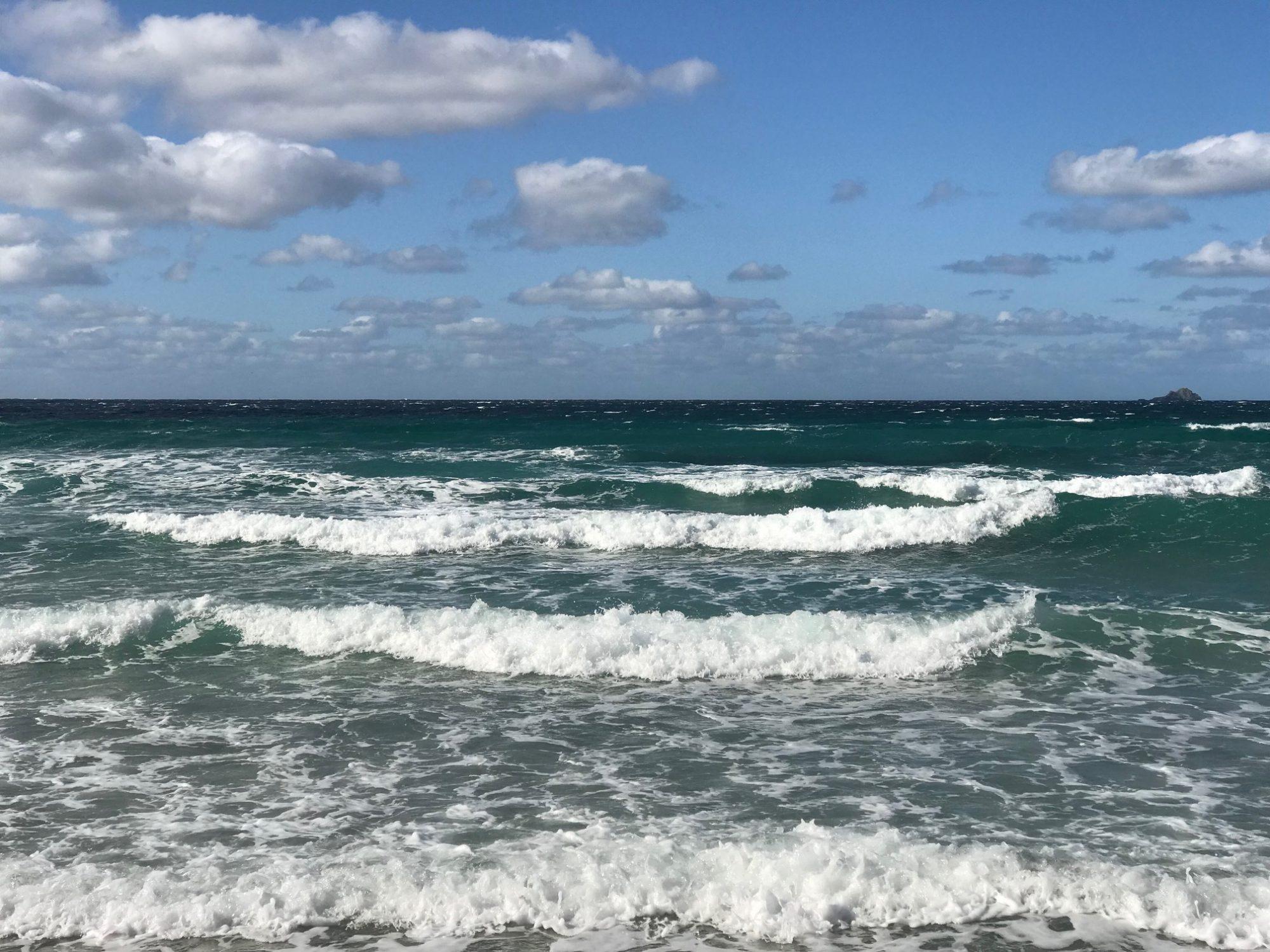
Cross-shore winds can also cause the water the water to chop up but this will also depend somewhat on the tidal conditions too. Wind against tidal flow will cause short choppy waves and often nasty water conditions. Wind with tidal flow usually flattens the sea. This is an important consideration when paddling around at your launch venue. What may be an easy paddle along the coast with the wind and tide will quickly turn into terrible when the tide turns and you also have to paddle back against it through messy water!
Try to fish a new venue on a calm day with light winds. Once you understand the general feel of the venue you can test it out in more demanding conditions as your confidence and knowledge builds.
Check with several weather forecasts before heading out – don’t just rely on one as they can sometimes get it wrong! I find www.xcweather.co.uk and magicseaweed.com to be fairly reliable, as well as the Windy App for smartphones.
Even with the best of planning based on the most accurate forecasts, sometimes the weather just doesn’t play ball. I have often arrived at a launch venue to find the sea not as flat as expected or with stronger winds than forecast. If you are in any doubt about the conditions, don’t launch. There is always another day or another launch spot that may offer more suitable conditions. Knowing your limits and when to hold off launching can be one of your greatest skills for safe kayak fishing.
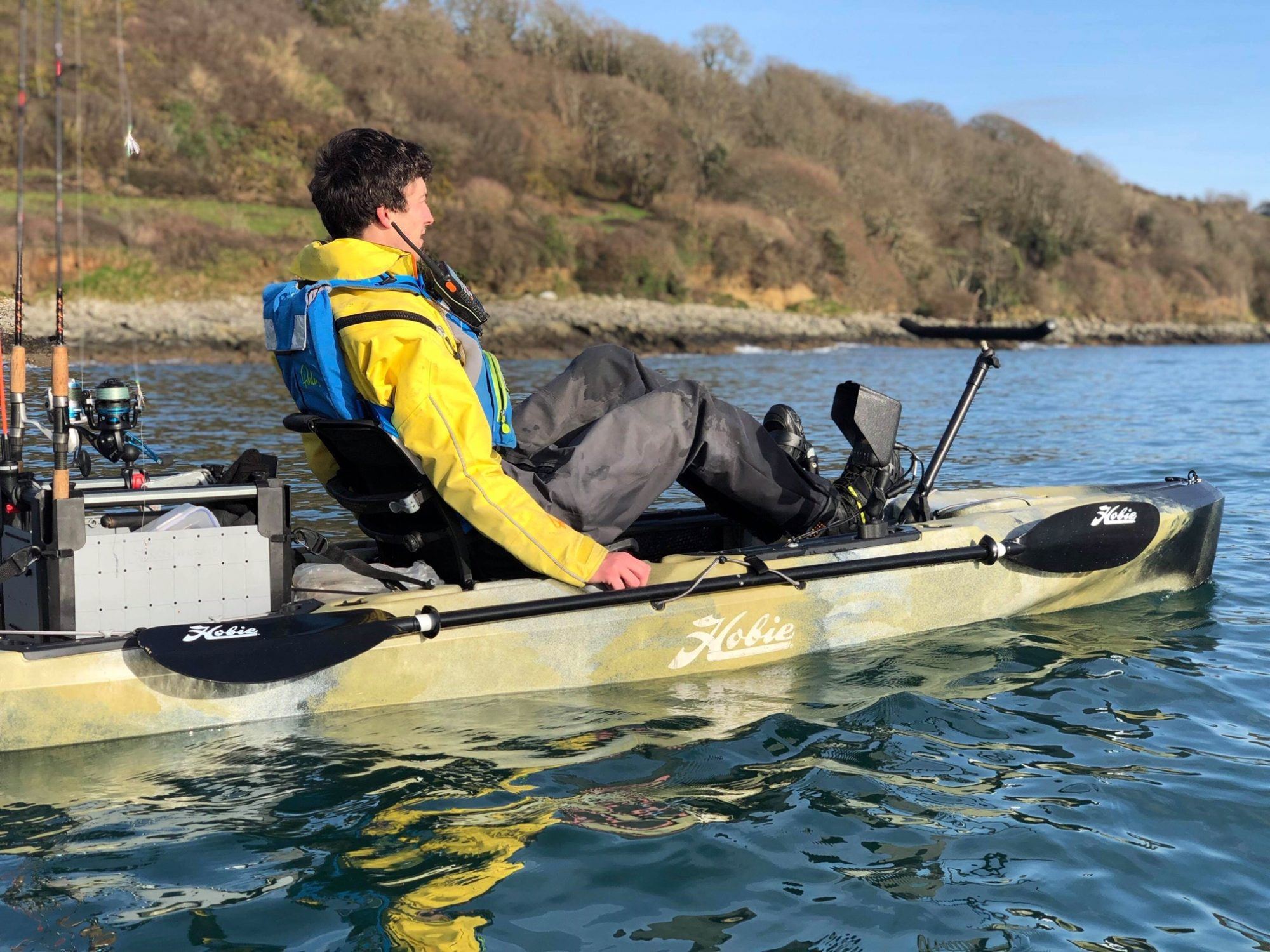
Swell
Swell brings surf, and surf can mean trouble for the kayak angler! If you are launching from an exposed beach then you will definitely need to check the surf forecast prior to launching. While paddling out through small one or two foot waves is relatively straightforward, paddling back in through them could see you going for an unwanted swim. Long or wide fishing kayaks are not designed for surfing and are very hard to control on a wave unless you know how to combat the kayak turning broadside into the wave. It is best to avoid a beach launch unless the waves are particularly small.
It is also not a good idea to launch during increasing swell conditions. 1-2 ft waves upon launching could rise to 3-4 ft+ by the time you land and this could pose great danger returning through waves of this size! Reliable swell and surf forecasts can be found on magicseaweed.com for many beaches across the country.
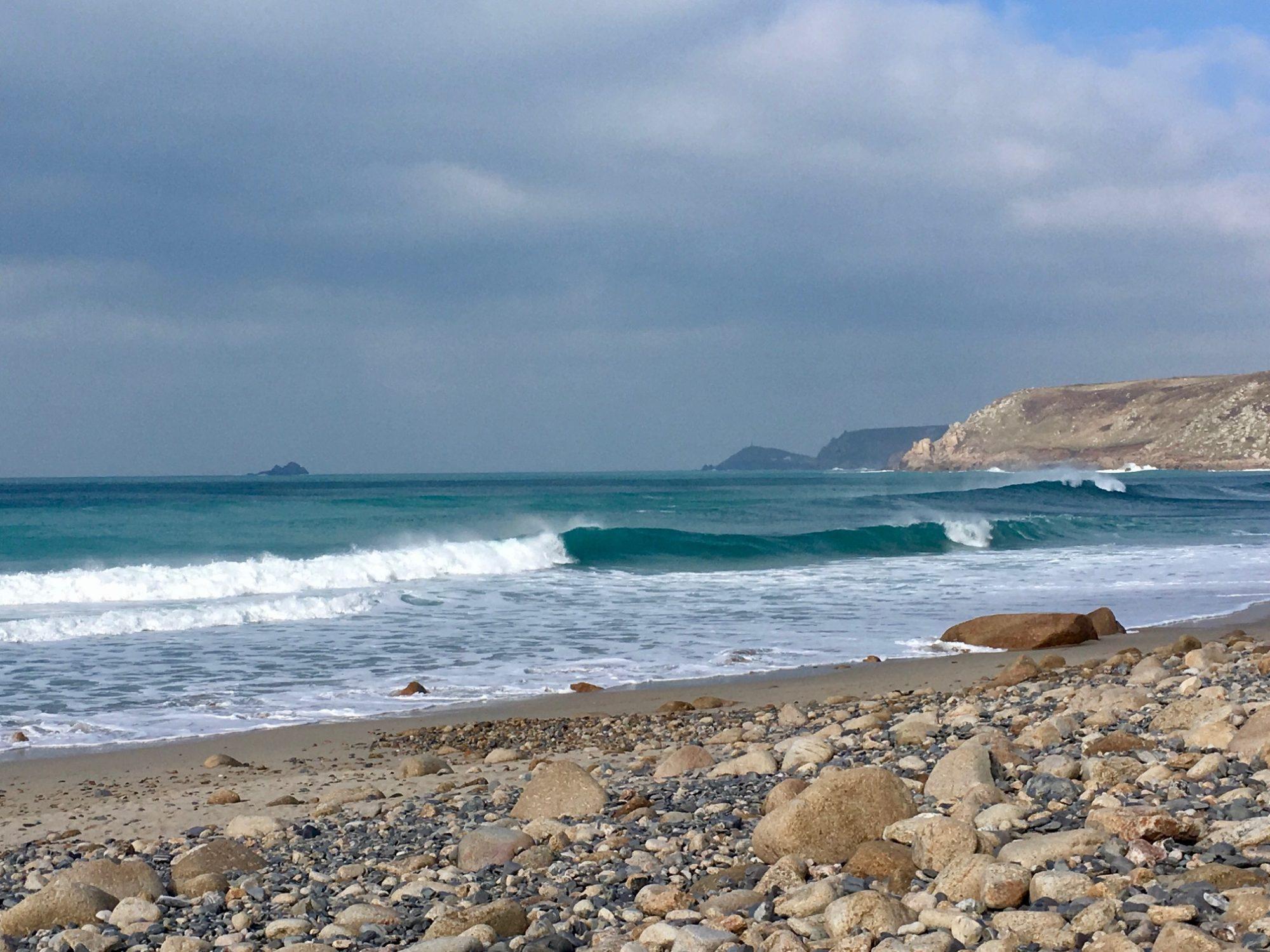
So you have nailed down a launch spot …
You have found a nice and easy launch spot, with parking nearby. It is a small tide and conditions are great! You stand at the water’s edge and look out to the horizon. All is set for a good day on the water … but what about the fishing? Where should I fish at the venue?
Getting onto the water easily and choosing conditions for a safe day on the water is only half the battle. You now need to catch some fish! You may be wondering where is best to drop a bait or cast your lure.
A good fishing spot
At many venues, the shoreline represents the biggest structure to fish around and this may also be the best place to fish too. Trolling lures along the rocks can turn up species such as bass, pollock, mackerel and wrasse. Large beach venues may only offer vast expanses of shallow clean ground, but finding sand banks and ledges may be the key to success finding flatfish, rays, smooth hounds and more. At deeper venues fishing over a reef or rough ground may put you onto good numbers of fish. Open rocky coastline may hold numerous features including gullies, headlands, offshore reefs and more.
Bathymetry help you understand the features below the surface … these maps of the seabed will show you exactly where likely fish-friendly features are. Navionics provide high detail charts of the seabed for use on GPS chart plotters, and you can access their charts for free on their website! Check out webapp.navionics.com and explore the underwater world in your area.
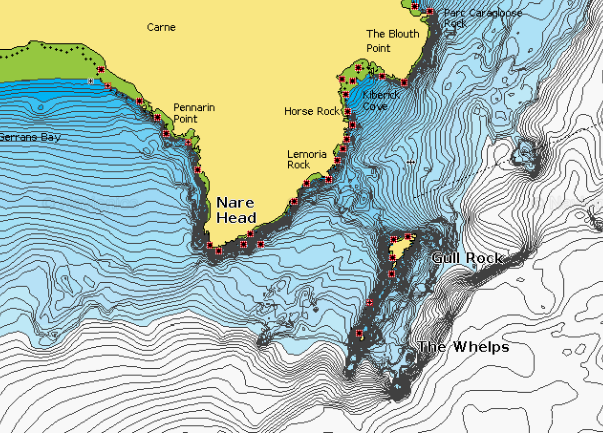
Image – webapp.navionics.com
Hazards
Consider the hazards at your launch spot. Some venues have obvious dangers to kayakers and kayak anglers. This could be a headland with strong tides or tidal races. Perhaps the area has heavy boat traffic with lots of sail craft zig-zagging all over the place. Some venues have shallow reefs that cause breaking waves at certain states of tide. Don’t be oblivious to danger or naïve about the risks – always edge on the side of caution.
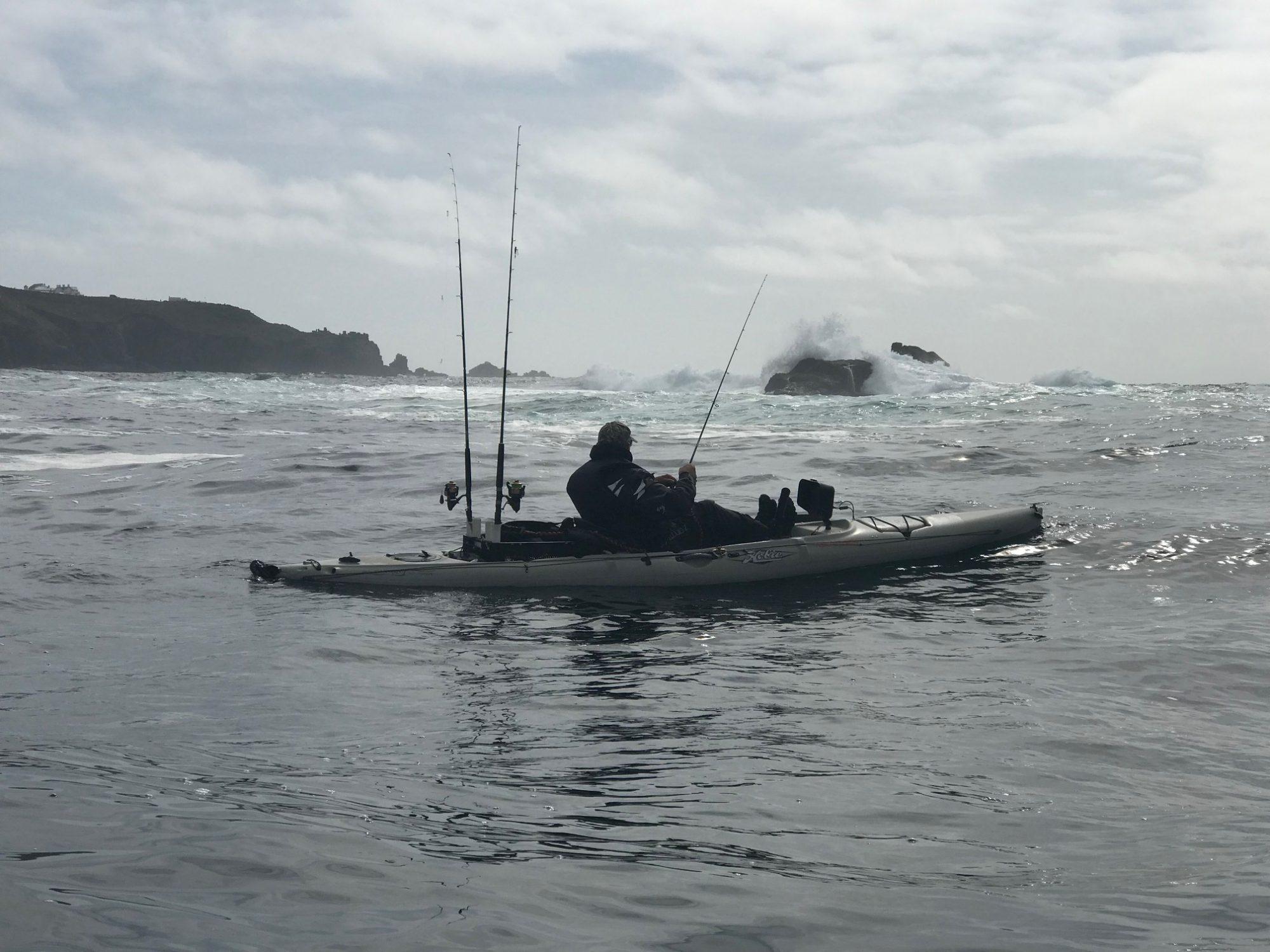
Talk to people
There is no better way to gain info on a venue than talking to those who already have experience at the spot. Tackle shop owners talk with lots of anglers and often have vast amounts of knowledge on the local area. This can be a good place to start.
www.anglersafloat.co.uk is a kayak fishing website and forum covering the UK, with a wealth of useful info from over ten years of contributions. Facebook is another very useful resource with a huge number of kayak fishing groups. There are groups covering localised areas of the country such as ‘Welsh Kayak Fishing Addicts’, ‘Kayak Fishing South West UK’, East Coast Kayak Anglers’ and ‘South East Coast Kayak Fishing UK’ along with nationwide groups including ‘UK Kayak Fishing’ and ‘Anglers Afloat Official FB Site’.
Join the online kayak fishing community and get a heads up on your local area. It is also a great opportunity to meet likeminded folk and perhaps meet up with others for a fish and to learn the ropes at a venue.
Go fish!
Once you have learned everything about your chosen venue, all that is left is to get out there during the right conditions and give it a go. Make notes on the venue so that you can build up your knowledge and make the most of your sessions on the water. You will soon know where and when is best to fish and translate this into sessions full of action!
